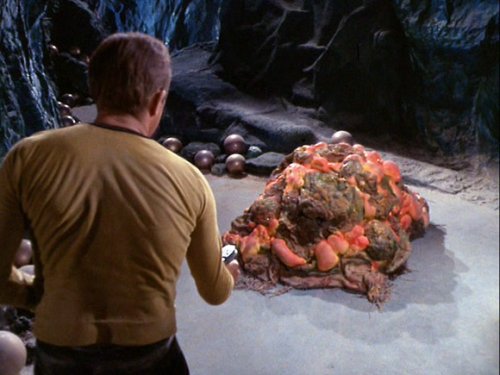[2023]
[2022]
[2021]
[2020]
[2019]
[2018]
[2017]
[2016]
[2015]
[2014]
[2013]
[2012]
[2011]
[2010]
[2009]
[2008]
[2007]
December
November
October
September
August
July
June
May
April
March
February
January
[2006]
[2005]
[2004]
[2003]
[Fri Nov 23 17:39:19 CET 2007]
A few days ago, while reading science news, I ran across an interesting story on how the strategy applied by bees to find the best sources of nectar and communicate between them is also being used for web servers at Georgia Tech. It's a clear example of biomimicry in action.
Ingenious indeed! {link to this story}Internet servers, which provide the computing power necessary to run Web sites, typically have a set number of servers devoted to a certain Web site or client. When users access a Web site, the servers provide computing power until all the requests to access and use the site have been fulfilled. Sometimes there are a lot of requests to access a site (for instance, a clothing company's retail site after a particularly effective television ad during a popular sporting event) and sometimes there are very few. Predicting demand for Web sites, including whether a user will access a video clip or initiate a purchase, is extremely difficult in a fickle Internet landscape, and servers are frequently overloaded and later become completely inactive at random.
Bees tackle their resource allocation problem (i.e., a limited number of bees and unpredictable demand on their time and desired location) with a seamless system driven by "dances". Here's how it works: The scout bees leave the hive in search of nectar. Once they've found a promising spot, they return to the hive "dance floor" and perform a dance. The direction of the dance tells the waiting forager bees which direction to fly, the numbers of waggle turns conveys the distance to the flower patch; and the length conveys the sweetness of the nectar.
[...]
While all that dancing may not sound like a model of efficiencya, it's actually optima for the unpredictable nectar world the bees inhabit (...). The system allows the bees to seamlessly shift from one nectar source to a more promising nectar source based on up-to-the-minutes conditions. All this without a clear leader or central command to slow the decision-making process.
[...]
Internet servers, on the other hand, are theoretically optimized for "normal" conditions, which are frequently challenged by fickle human nature. By assigning certain servers to a certain Web site, Internet hosts are establishing a system that works well under normal conditions and poorly under conditions that strain demand. When demand for one site swells, many servers sit idly by as the assigned servers reach capacity and begin shifting potential users to a lengthening queue that tries their patience and turns away potential customers.
Tovey and Nakrani [Georgia Tech researchers] set to work translating the bee strategy for these idle Internet servers. They developed a virtual "dance floor" for a network of servers. When one server receives a user request for a certain Web site, an internal advertisement (standing in a little less colorfully for the dance) is placed on the dance floor to attract any available servers. Thead's duration depends on the demand on the site and how much revenue its users may generate. The longer an ad remains on the dance floor, the more power availale servers devote to serving the Web site requestes advertised.
[Fri Nov 23 17:27:51 CET 2007]
Wired recently published a story on Star Trek's 10 cheesiest classic creatures that made me laugh out loud. Check out some of the gems included on the list:
{link to this story}


